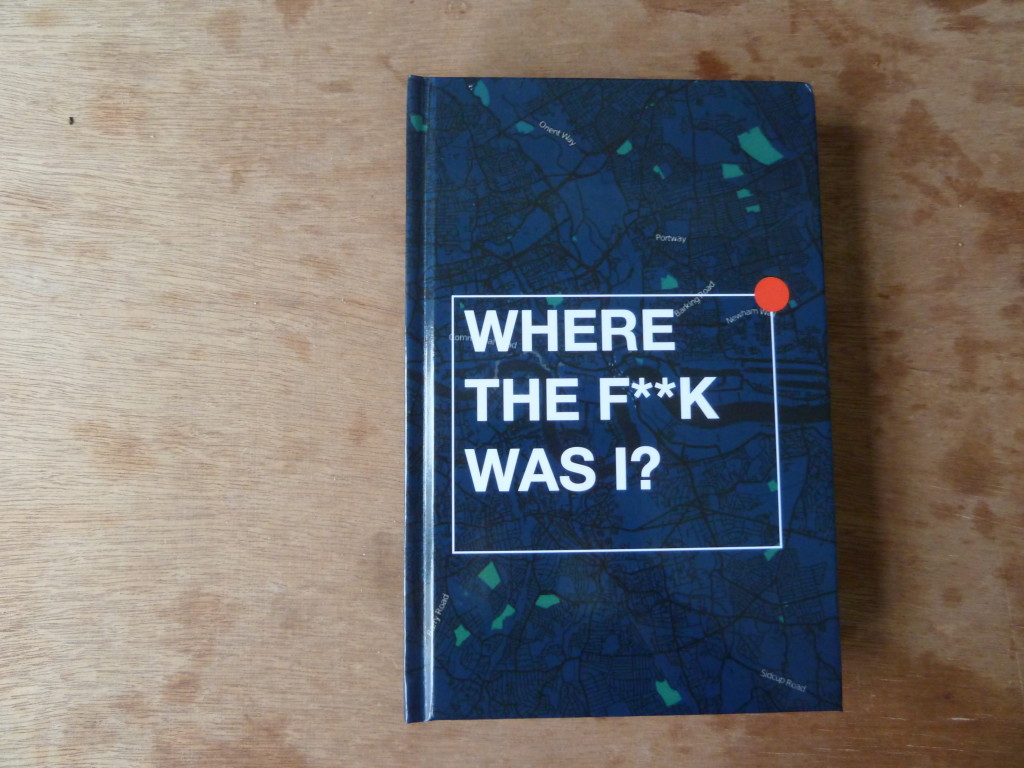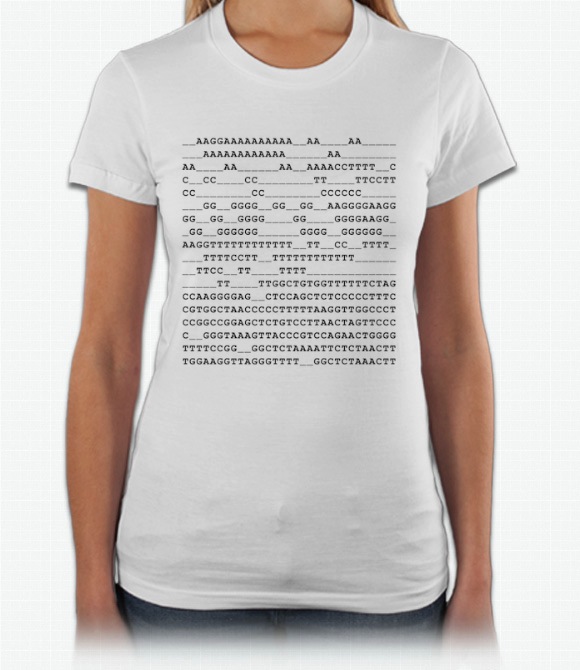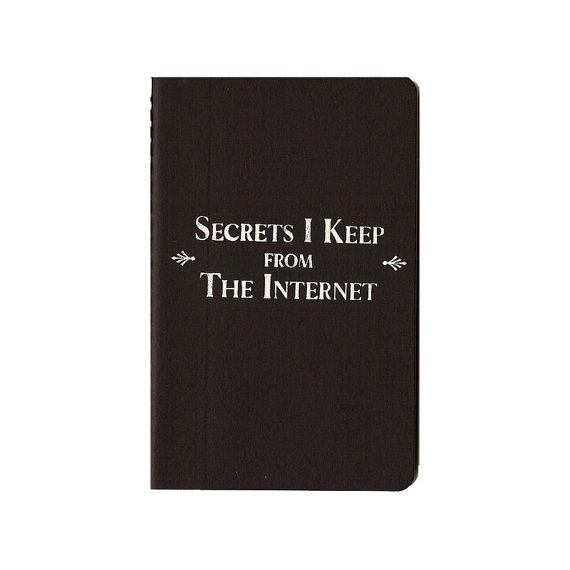Title |
From Browser’s Cache to the Human Genome – Towards an Extended Notion of Publishing |
Author |
|
Date |
(The original version of this article, written in Italian, was originally published in the catalog of Fahrenheit 39 – 4th Edition.)
Publishing and the Public
While referring to a specific professional field, the term “publishing” puts emphasis on the act of making things public. Each facet of this practice has undergone radical transformations as a result of the widespread diffusion of interconnected digital devices. An overall mapping of the relationships between publishing and digital technologies would lead, in all probability, to failure. However, I believe that by focusing on the act of publishing and its current significance, it is possible to draw a fruitful route in the editorial universe that involves a variety of actors and operating modes, going so far as to redefine its boundaries.
In its broadest and original sense, “to publish” means ”to make [something] generally known”,[1] thus ensuring that a public has access to it. What do we mean by “public” today? It is partially true that a simple click is needed to make a given content potentially accessible by anyone; this has the side effect of an exponential increase of the available information, and therefore a growing difficulty in catching the general attention. But does “general attention” still make sense? The public – here understood as audience – should not be considered a single, generic and abstract entity, but rather as a multiplicity of more or less specific contexts that exist simultaneously: think of the market segment of an independent publishing house, but also of one’s circle of friends on Google+, or even, as discussed below, of the services able to track the habits of users and monetise the information about them.
What happens when, in addition to writing an essay or a blog post, we include Delicious’ bookmarks or Foursquare’s check-ins in the field of publishing? These actions leave a trace, sometimes permanent, that can be received at the same time by very diverse “publics”: one’s followers, users who accidentally come across it, but also the algorithms run by the platforms employed and even search engines’ Web crawlers.
In this perspective, new agents inhabit the publishing ecosystem, reconfiguring the activities and relationships of traditional players such as writers, publishers, distributors, and finally readers. While a clear distinction between user-generated content and “official” information becomes less and less valid, similarly the exact boundaries between content, information and data vacillate: according to historian of technology George Dyson, the ultimate aim of Google Books, Google’s universal digitisation project, is not to ensure that books are read by humans, but by artificial intelligences.[2] Perhaps we are witnessing a reversal: given its invisible presence in everyday life, that of publishing is not even primarily an activity. It is comparable to a “subprocess” that operates constantly on the sly. And when the amount of automatically shared information exceeds the one of intentionally published content, the latter becomes the exception.
The Thin Line Between Reading and Writing
While «books are being replaced by reading»[3] — a diffused, manifold mode of reading, able to level off the most diverse languages — the latter increasingly identifies itself with a new kind of writing, whose privileged form is metadata (when was the last time the document was accessed? from what device? etc).
Poet, writer and filmmaker Tan Lin asks:
What is the precise relation between reading, regarded as a social activity that takes place in a network, and writing, which also takes place in a social network? From which of these two perspectives is the text framed? Can it somehow be both a read and written text simultaneously? What would that mean? Clearly, the reception of the work is foregrounded as much as the production and dissemination. And furthermore, reading, in a web-based environment, crosses into writing, publication, distribution, and marketing. Is a Twitter feed a form of publication? or is it writing? or is it distribution that is “pulled” by readers who “subscribe”?[4]
In his project Ambient Fiction Reading System 01: A List of Things I Read Didn’t Read and Hardly Read for Exactly One Year (2006),[5] Tan Lin takes such overlapping of reading and writing to the extreme, by recording for a whole year, in form of blogposts, the titles of some of his daily readings (hard to say if they occurred on paper or screen), and the time he spent on them.

Evan Roth, Internet Cache Self Portrait: July 17, 2012 (2013), Vinyl Print 150cmx1300cm. Installation view from Gordian Conviviality at Import Projects, Berlin, DE. Photo: Benjamin Busch. Courtesy of the artist.
The criterion established by Tan Lin, while simulating the production of logfiles typical of computers, has probably implied a substantial manual effort. On the contrary, US artist and hacker Evan Roth, realises a project, in some way similar, entitled Internet Cache Self Portraits (2013), in which he exploits a process automatically carried out by the browser: by retrieving the images embedded in the webpages he visited from the browser’s cache, he produces large prints that become a sort of personal iconographic diary. Is it possible to apply such an idea to a participatory scale? Surfcave, an online platform created by Brad Troemel and Jonathan Vingiano (2012), allows members to anonymously publish every picture that appears in their browser. The result is a sort of constantly updated collective portrait.
Publishing is Default
In 2011, English artist and technologist James Bridle made a book titled Where The F**k Was I?. The volume includes 202 geographic maps showing every location he visited in about a year, accompanied by brief notes. Bridle did not need to systematically collect the necessary data, because they were automatically recorded by his Iphone without requiring any kind of consensus.
Such default processes are constantly increasing as they foster the continuity of the interactions among different softwares, devices and services. And the frequent absence of feedback is justified, according to the dominant design philosophy, by the intention of sparing the user from unnecessary distractions. As we have seen, subsidiary information – that are seemingly distant from the sphere of publishing – may become part of it in unexpected ways. The use of geographic data by Bridle is not an isolated case: in fact there are several projects of site specific literature, digital literary works whose content varies according to the user’s location.[6]
By autonomously emitting and receiving data, computers determine the way in which information is represented (in Bridle’s case, his movements become a mere sequence of coordinates) and favour certain interpretations at the expense of others, sometimes placing the human being in the background. Borrowing the term from Christian Bök, poet Kenneth Goldsmith speaks of robopoetics, “a condition whereby machines write literature meant to be read by other machines, bypassing a human readership entirely.”[7] When these patterns of production and analysis of data become an integral part of the publishing sphere, what are the implications for the formulation, dissemination and evaluation of thought?
No Forest is Deserted
A well-known thought experiment, usually attributed to George Berkeley, reads more or less like this:
If a tree falls in a forest and no one is around to hear it, does it make a sound?[8]
Several phenomena that did not have any observer until now, suddenly “appear” as detected by softwares in constant activity. Since they are observed, these phenomena affect the perception of reality and the actions that follow. Often, an economic value is attributed to raw data and their correlations, in fact it is with them that we pay many online “free” services.
These dynamics play a peculiar role in the context of publishing. The New York Times recently featured an article titled: “As New Services Track Habits, the E-Books Are Reading You”.[9] Since at least the 4th century AD, when Aurelius Ambrosius began to practice silent reading, reading itself slowly started to become a private activity.[10] With today’s transition from reader to user, in which the latter interacts with a complex system whose dynamics are not immediately intelligible, we are witnessing a sudden reversal. This is about an alteration of the concept of privacy, that is in turn connected to a shift toward collective reading. In fact, readers themselves, using devices such as the Amazon Kindle, can observe the passages of a text underlined by the greatest number of users.
As reported by the The New York Times, reading-related data extracted from online services such as Scribd and Oyster can be redistributed among the authors. Author Quinn Loftis asks: “What writer would pass up the opportunity to peer into the reader’s mind?”[11] Of course, there aren’t only writers to think so: Anna Rafferty, Penguin digital managing director, imagines an app that would be ”a cross between Fitbit and Foursquare but with books”, able to record the activity of the reader and generate suggestions for future purchases inspired by the Quantified Self movement.[12]
“Write For Scanners, Not For Readers.”[13]
In a context of permanent crowdsourcing, even underlining a passage represents an expression of appreciation: attributing a different value – a kind of privileged status – to a popular highlight is inevitable. Therefore the sum of these passages may act, in the eyes of the authors, publishers, distributors and readers, as a new yardstick for the quality of the text that leaves no room for ambiguities, because it is quantitatively represented. Assuming that some writing styles lend to the highlight more than others, the risk is that, in the long term, literary works would be remodeled in accordance with the proclivities of the average user.
In this regard, it is worth mentioning the inline tweet: a kind of “pre-packaged” tweet that suggests to the user the most appealing parts of the text to share. Sarcastically, Nicholas Carr, author of the controversial The Shallows: What the Internet Is Doing to Our Brains, says that:
[…] the best thing about the inline tweet is that you no longer have to read, or even pretend to read, what you tweet before you tweet it. Assuming you trust the judgment of a publication’s in-house tweet curator, or tweet-curating algorithm, you can just look for the little tweety bird icon, give the inline snippet a click, and be on your way. [14]
Lastly, let’s consider the study, conducted by researchers at Stony Brook University, that makes use of an algorithm able to predict the “success” – defined in terms of the amount of downloads or sales – of a literary work based on various criteria related to the writing style.[15] The researchers even came up with a list of the most popular terms and the ones to avoid. It could be argued that such data are useful in that they allow the author to find the best way to convey her own content; however it must be remembered that “form” and “content” are not two perfectly dissociable aspects: for instance it is reasonable to believe that the listicle (portmanteau of list and article) – a currently widespread writing form which consists of a numbered list of short periods on the most diverse subjects – does not allow, by its nature, the structural complexity afforded by the form of the essay.
Put Your Genome on Your Shirt
Going back to the start: what is then the purpose of extending the notion of publishing? The previous examples show how the information that is published, sometimes unbeknownst to the user, can have an economic value and influence, directly or not, the ways in which ideas are produced, disseminated and received. It is therefore necessary a new mindset: a different predisposition to the practices of publishing that would possibly start from those who publish for a living, but would also involve designers of systems and interfaces, and extends to the end users, who are publishers in all respects too. The goal is to provide the tools to grasp the breadth and complexity of the dynamics related to information within networked systems.
A question remains open: does it still make sense to draw a line? Where does information management become something other than publishing? According to Australian theoretician Andrew Murphie:
Publishing should be defined as broadly as possible, almost to the boundaries of life and culture. Consider the publication of genomic material, or, via increasingly sophisticated brain scanners, of the electro-chemical activity of the brain.[16]
Considering a service like DNA-pparel, the previous statement, written in 2008, appears prophetic. DNA-pparel is an online platform, created by Daniel Luxemburg and launched in 2013, that allows a user to print part of her genome on a custom t-shirt. The service shows how an extended notion of publishing may concern at least three aspects: content (in this case, part of the genome); modality (not a medical card, but a t-shirt); audience (not a geneticist, but people on the street).
To conclude, it is worth pointing out that the perspective on publishing described so far does not necessarily imply an increase of the content to disseminate, of the means by which to do so, or the public to reach. On the contrary, an increased awareness would hopefully lead to carefully select the information to share (or not to), to wisely use the means of dissemination that really meet one’s needs, and finally to identify and know one’s audience, as small as it can be. Possibly this would give rise to more authentic networks able to resist the urge to constantly communicate, produced by the ambiguous accessibility that characterises the so-called new media.
-
Merriam-Webster, s.v. “publish”. ↩
-
George Dyson, “Turing’s Cathedral”, Edge, 23 maggio 2010, http://edge.org/conversation/turing–39s-cathedral, accessed: April 2014. ↩
-
Jack Shafer, “The Fallen Status of Books”, Slate, 9 settembre 2010, http://www.slate.com/articles/news_and_politics/press_box/2010/09/the_fallen_status_of_books.html, accessed: April 2014. ↩
-
Tan Lin interviewed by Chris Alexander, Kristen Gallagher and Gordon Tapper, “Tan Lin Interviewed”, Galatea Resurrects #12, 18th May 2009, http://galatearesurrection12.blogspot.it/2009/05/tan-lin-interviewed.html, accessed: April 2014. ↩
-
http://ambientreading.blogspot.it, accessed: April 2014. ↩
-
Andrew Wilson, “Site specific literature explained…”, The Literary Platform, 5th July 2011, http://www.theliteraryplatform.com/2011/07/site-specific-literature-explained/, accessed: April 2014. ↩
-
Kenneth Goldsmith, Uncreative Writing, Columbia University Press, 2011, p. 13. ↩
-
Cfr. George Berkeley, A Treatise Concerning the Principles of Human Knowledge, 1710. ↩
-
David Stritfeld, “As New Services Track Habits, the E-Books Are Reading You”, The New York Times, 24th December 2013, http://www.nytimes.com/2013/12/25/technology/as-new-services-track-habits-the-e-books-are-reading-you.html, accessed: April 2014. ↩
-
Alberto Manguel, A History of Reading, Vintage Canada, 1997, “The Silent Readers“. ↩
-
David Stritfeld, op. cit. ↩
-
Anna Rafferty interviewed by Alison Flood, “Digital Publishing: The Experts’ View of What’s Next”, Guardian, 10th January 2014, http://www.theguardian.com/books/2014/jan/10/digital-publishing-next-industry-revolution, accessed: April 2014. ↩
-
Mark Nichol, “7 Tips for Writing for Online Readers”, Daily Writing Tips, 2011, http://www.dailywritingtips.com/7-tips-for-writing-for-online-readers/, accessed: April 2014. ↩
-
Nicholas Carr, “Ambient Tweetability”, Rough Type, 4th September 2013, http://www.roughtype.com/?p=3770, accessed: April 2014. ↩
-
Vikas Ganjigunte Ashok, Song Feng, Yejin Choi, ”Success with Style: Using Writing Style to Predict the Success of Novels”, 2013, http://aclweb.org/anthology/D/D13/D13–1181.pdf, accessed: April 2014. ↩
-
Andrew Murphie, “Ghosted Publics, the ‘Unacknowledged Collective’ in the Contemporary Transformation of the Circulation of Ideas”, in The Mag.net reader 3, edited by Alessandro Ludovico and Nat Mueller, OpenMute, 2008, pp. 107–8. ↩





